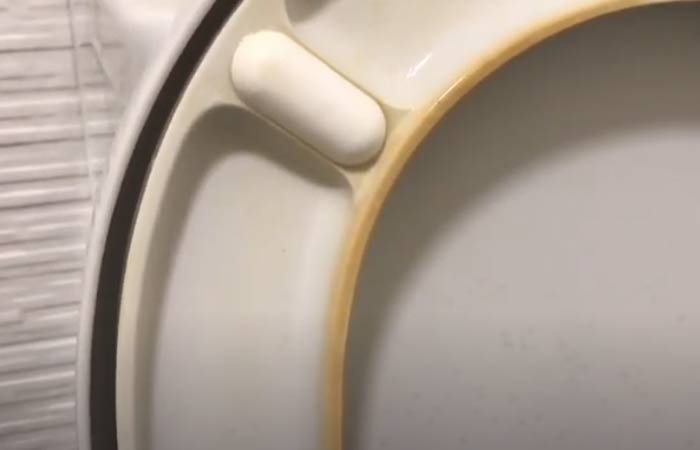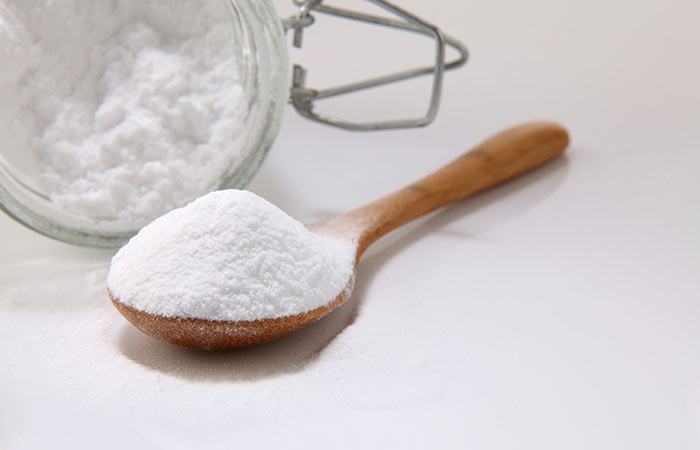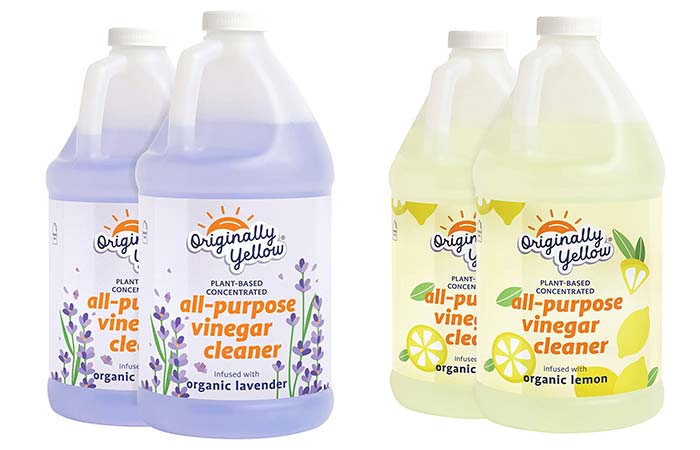Yellowed Toilet Seat & Cover: What to do
Yellowing of a toilet seat is often caused by a buildup of mineral deposits, some cleaning solutions, urine stains, or aging of the plastic.
To remove the yellow stains on your toilet seat, use a solution of either baking soda, vinegar, lemon juice, hydrogen peroxide or a toilet cleaner. If the seat is too old, you can replace it.
Continue reading below for more details, including tips to prevent your toilet seat from turning yellow.
Toilet Seats Turning Yellow After Bleaching
Bleaching a toilet seat can help to remove stains and discolorations, however, if you don’t rinse the seat properly after bleaching, it can become yellowed. This is because the bleach can react with the plastic or resin material of the seat, causing discoloration.
It’s the chlorine in the bleach. Chlorine is a powerful oxidizing agent, which means it reacts with the organic material on the surface of the toilet seat, such as urine, sweat, and other organic compounds. As chlorine reacts with these compounds, it oxidizes them and turns them yellow.

Causes of Yellow of the Toilet Seat & Cover
- Age: Unfortunately, some discoloration of your toilet seat is simply due to wear and tear. As your toilet seat ages, it will naturally begin to discolor and fade, making it appear yellow.
- Pee: When urine is exposed to air, it begins to break down and release ammonia gas, which turns the color of the seat yellow. Some toilet seats are often made from a porous material that will absorb these gasses and turn them yellow over time.
- Mineral Deposits & Dirt: The water that comes out of your taps may contain high levels of minerals, such as iron and calcium, and organic dirt which can settle on the surface of the toilet seat over time. The minerals can cause the color of the toilet seat to change, eventually leading to a yellowish color.
- Poor Cleaning: Believe it or not, your cleaning habits could be the leading cause of your toilet seat turning yellow. Improper cleaning techniques can lead to a build-up of dirt and bacteria, leading to discoloration
- Temperature: You may not realize it, but extreme temperatures can cause your toilet seat to turn yellow. If you keep your bathroom too hot or too cold, it can cause the plastic in your toilet seat to warp and discolor.
Further Reading:
- Causes and how to remove yellow stains in the bowl bottom and walls
- Pink Ring in Toilet Bowl-Causes & Removal
- How to Remove Black Mold in Toilet Tank & Bowl
- Dealing with Brown Rings and Sediments in Toilet
Removing Yellow Stains from the Toilet Seat and Cover
Removing yellow stains from toilet seat or cover can be tricky, but it is possible. With the right products and techniques, you can restore the original color of your toilet seat by following these steps:
Use a solution of vinegar and baking soda
Baking soda and vinegar make an effective combination for removing yellow stains from toilet seats


- Mix equal parts of water and vinegar or baking soda and vinegar to create a paste
- Apply the paste to the stained sections of your toilet seat
- Let it sit for a few minutes.
- Scrub the toilet seat with a brush
- Rinse it with water.
DIY Cleaning Paste
To make a paste, combine 1 part baking soda with two parts cream of tartar. Mix the ingredients until they form a thick paste. Then, apply the paste to the yellow stains and let it sit for 15–20 minutes.
Lemon Juice
Lemon juice is a great way to remove yellow stains from your toilet seat. To do this, mix equal parts of lemon juice and water in a spray bottle and spray the area where the stain is. Let it sit for about 5 minutes. Scrub then rinse with water.
Use Hydrogen Peroxide
Apply hydrogen peroxide to the toilet seat and let it sit for a few minutes. Scrub the seat with a brush, then rinse it with water.
If you’re still having trouble removing the yellow stains, you may need to repeat this process until they are gone.
Soak in Bleach
If the toilet seat cover is removable, and is made from materials that wont react with bleach, you can soak it in a solution of one part bleach to ten parts water for a few hours or overnight. After soaking, rinse the cover with water and let it dry completely before putting it back on the toilet seat.
It’s important to note that bleach should not be used on all types of plastic. Some plastics can become discolored or damaged when exposed to bleach or other harsh chemicals.
If you’re still having trouble removing the yellow stains, you may need to repeat this process until they are gone.
Make sure to dry the seat before putting the lid back on.
Replace the Toilet Seat
If the yellowing is too severe or the seat is old, you may want to consider replacing it with a new one which is free of any stains.
Note:
- Remember to wear personal protective equipment such as latex gloves, safety goggles or even a mask.
- Follow the manufacturer’s instructions for, the actual cleaning and care of your toilet seat.
- Check the manufacturer’s instructions or consult with a professional before using any cleaning product on your toilet seat
- Make sure the toilet seat is clean and dry before attempting any treatments. This will help ensure that the product you use will be effective.
Tips to Prevent Yellowed Toilet Seat
The yellowed toilet seat can be very embarrassing. Fortunately, there are a few simple tips to prevent yellowing and keep your toilet seat looking good.
Clean Your Toilet Regularly
Try cleaning your toilet seat with warm water and mild soap once or every other week, depending on how often you use it. Regular cleaning is essential for preventing the yellowing of toilet seats.
Cleaning your seat regularly removes any dirt, grime, or bacteria that can cause discoloration. Furthermore, regular cleaning will help extend the life of your toilet seat by preventing damage from harsh chemicals or excessive wear and tear.
Use a Toilet Seat Liner
Toilet seat liners can help protect the seat from staining and discoloration, and they’re generally easier to clean than the seat itself.
They provide a layer of protection from dirt, bacteria, and minerals. It’s a good idea to replace the liners every few months to ensure they still offer protection.
Keep Your Bathroom Well-Ventilated
This is often overlooked, but a well-ventilated bathroom will help keep yellowing at bay. You can open windows or turn on the exhaust fan to help circulate air in the room and remove excess humidity from the room.
This will also prevent mold growth on surfaces like tile grout, so you don’t have to worry about yellow stains extending outside the toilet seat area.
Use a Toilet Cover
The seat covers provide extra protection against the harmful chemicals in urine and other bathroom fluids that may cause discoloration. You can use a standard-size seat cover for any toilet seat and wash it with the rest of your laundry.
These covers are also suitable for those who have sensitive skin or allergies to certain materials. Toilet seat covers are made from a soft cloth such as cotton or nylon.
Keep the Lid Down
One of the easiest ways to prevent yellow staining in your toilet is simply keeping the lid down when you’re not using it.
Stains tend to build up underneath the lid, so having it open will allow air circulation, which can help prevent these stains from developing over time. If you need to lift the lid during use, lock it back in place after each use.
Wipe up Spills as Soon as they Happen
This is a crucial step for preventing the yellowing from toilet seat stains. If you cannot clean up the spill immediately, use an absorbent item such as a paper towel or tissue and dab it up so that the liquid does not sit on the surface of your toilet seat.
Avoid using Harsh Chemicals on the Toilet Seat
You can use environmentally friendly products that are not harsh, like lemon juice, baking soda, vinegar, and cleaning paste. Avoid using harsh chemicals.
Chemicals like bleach can cause the color of the plastic to change or even warp. If you’re using a cleaner that contains bleach, mix it with water before applying it.
Remove Rings from Your Fingers Before Touching the Toilet Seat
When you have a ring on your finger, it is possible that the ring can get stuck in the creases of the toilet seat and then leave a yellow stain when you remove it.
If this happens to you, remove your rings when you go to the toilet and wash your hands thoroughly after removing them so that any residue does not spread elsewhere.
Flush the Toilet Bowl Frequently
Flushing the toilet bowl frequently helps prevent stains from settling into the porcelain. When using a plunger, ensure you have a whole bucket of water and not just part of it. This will ensure you have enough water in the bowl to flush effectively.
Always flush with hot water first thing in the morning, then again at night before bedtime. This will help clear out any residue and debris that may have dried during the day.